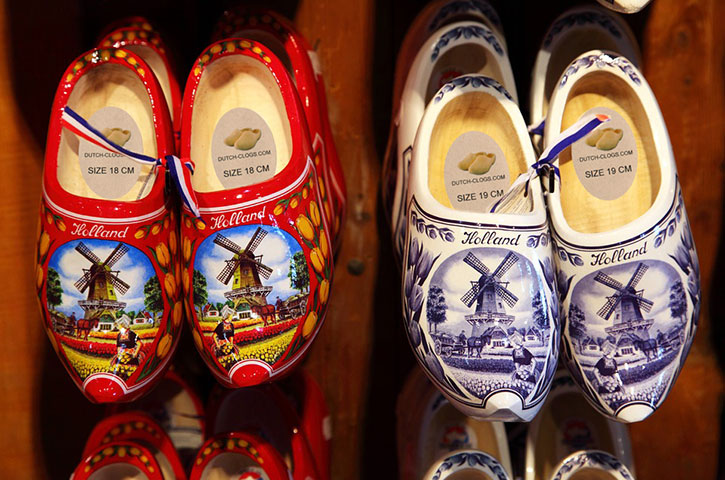In this article we let you know how wooden clogs are made. After careful inspection by the clog maker, the wood is selected. The tree sap must have disappeared which reduces the chance of shrinkage cracks. The sawn block is made wet so that it can be turned by machine. This is to prevent cracking.
Model clog for indication
Once the rough sawing process is complete, a plastic model clog is placed to indicate how far the sawing and gouging may go. The machine immediately mirrors a left and right clog ten probe moves along the model and translates the shape of the clog to the gouges. In this way, clogs are produced in rapid succession, which closely resemble the original model clog to the nearest hundredth of a millimeter.
Ingenious drilling system
Now it’s time for the pre-drilling: it is an ingenious rotating and tilting system that simultaneously drills out a left and right wooden shoe. Because of the tilting, the chisels do their work both in the heel and in the “front” of the clog. After the pre-drill follows the post-drill. Finer chisels make the footbed to the right size here.
On the front and back of the clog there are still protrusions with which the clogs are clamped in the machines, the so-called props.
Lose moisture for best results
The wood must lose moisture in order to be able to sand the wooden shoe. To prevent cracking during this drying process, the wooden shoe is slowly heated to a temperature of thirty-five degrees Celsius. There is quite a difference in weight between the lumps before and after the stay in the drying room.
Almost complete
When all the woodworking is completed, the wooden shoe goes into the primer. Also then, new irregularities and small wood hairs are removed by sanding and polishing. Then the wooden shoe will receive a nice coat of paint and decorations. With the help of air balls, special color effects will be applied to the wet paint.


